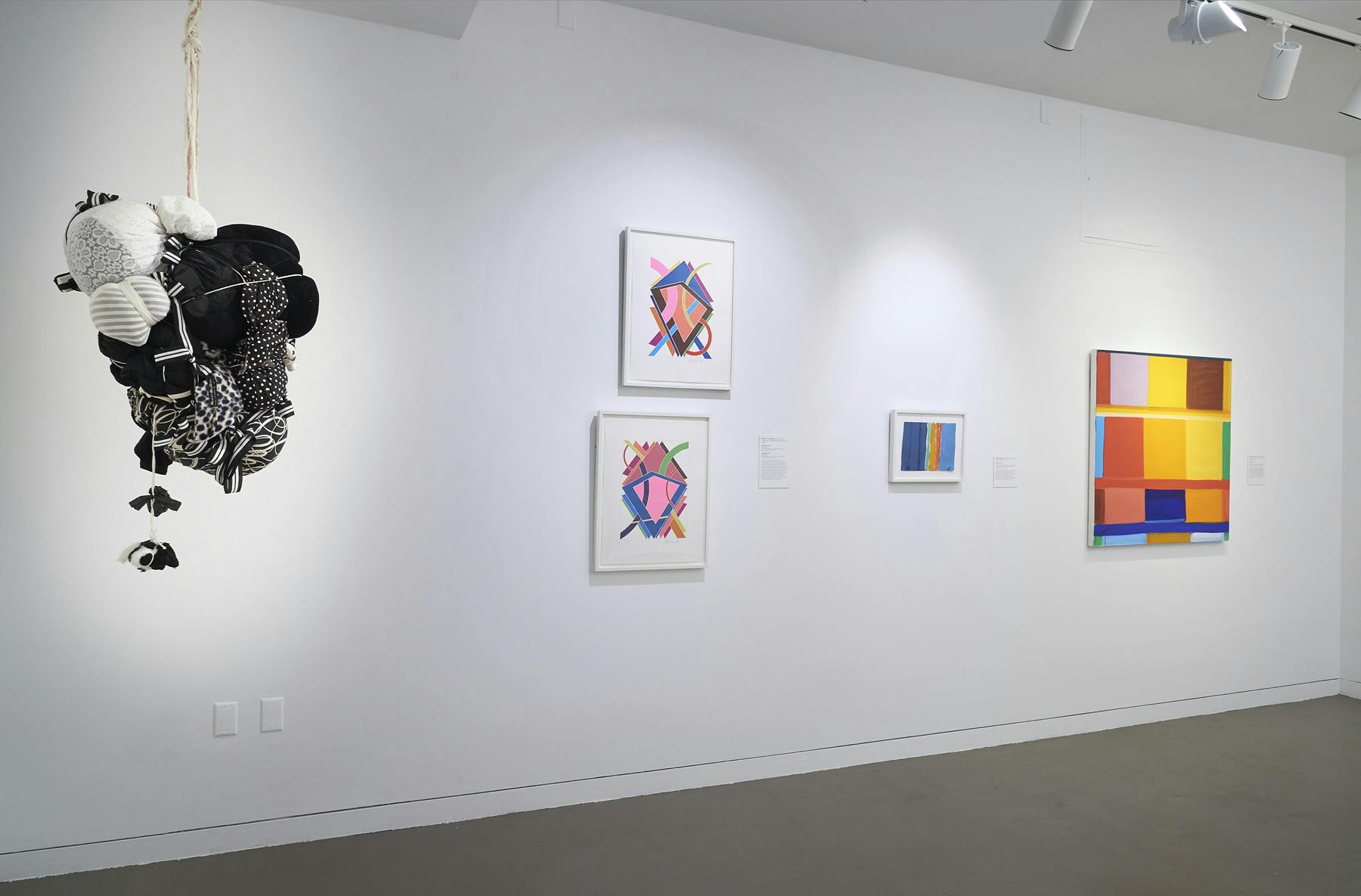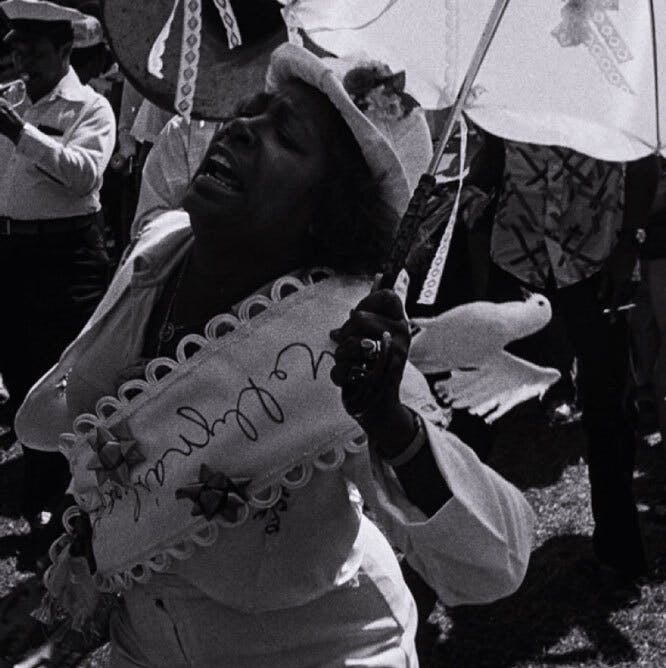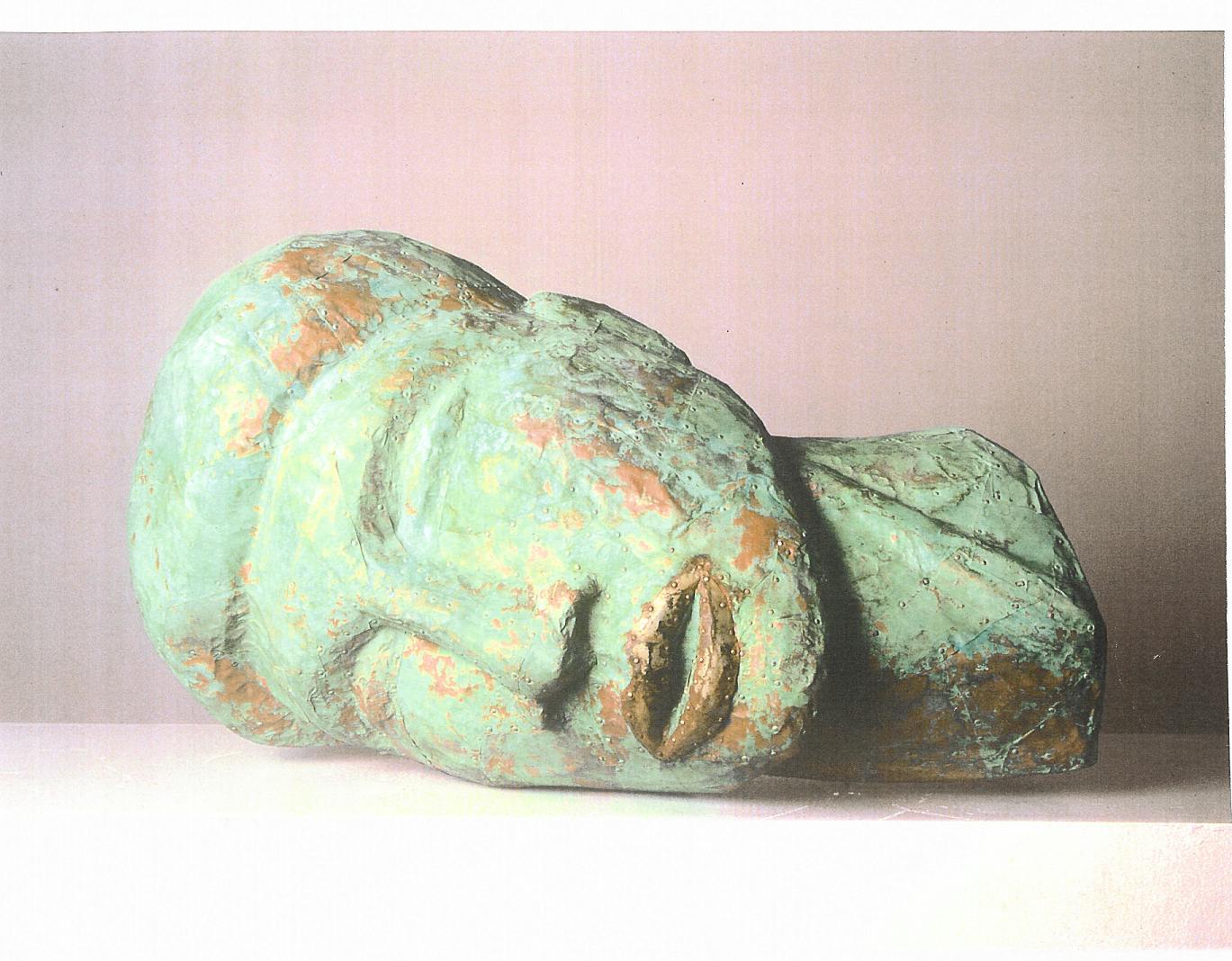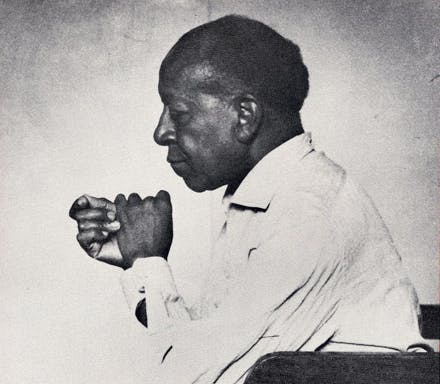Beauford Delaney
(1901–1979)Beauford Delaney is best known for his distinct approach to figuration and colorful expressionist compositions.
Biography
Beauford Delaney’s paintings of New York street scenes often depicted lively scenes in jazz clubs and prominent Black figures like W.E.B. Du Bois.
After six years in Boston studying art at institutions such as the South Boston School of Art and the Copley Society, and through visits to museums, he found himself drawn to the energy of the Harlem Renaissance. He moved to New York to work with the mural division of the Federal Art Project, where he collaborated with artist Charles Alston at Harlem Hospital Center. During his time in New York, Delaney frequented salons and exhibitions held in Alston’s Harlem studio, featuring the likes of Gwendolyn Knight, Jacob Lawrence, and Norman Lewis, as well as events with the avant-garde community, including Georgia O’Keefe and Alfred Stieglitz, in Greenwich Village. His paintings of New York street scenes often depicted lively scenes in jazz clubs and prominent Black figures like W.E.B. Du Bois.
Despite his participation in gay bohemian culture in New York, Delaney was never entirely comfortable with his sexuality. In 1953, he settled in Paris, where he discovered a new sense of freedom from racial and sexual biases. Abroad, his work transformed from the portraits, still lifes, and street scenes he made for much of the 1940s into expressionist studies of light. In the months following a 1961 solo gallery exhibition, Delaney experienced economic and psychiatric distress that led to a suicide attempt. He recovered, but during this difficult time, Delaney produced a series of works wherein he described the light as “enshrouded or overwhelmed, struggling to hold the forces of darkness at bay.”1 Although Delaney continued to participate in group and solo exhibitions in Paris throughout the 1960s and 70s, following years of hospitalization for mental illnesses, the artist passed away at Saint-Anne Hospital in Paris in 1979.
In 1978, just a year before his passing, the Studio Museum presented Delaney’s first institutional retrospective, Black Masters Series: Retrospective of Beauford Delaney. The Museum also hosted a traveling solo exhibition, Beauford Delaney: The Color Yellow, in 2002. His work has been featured in group exhibitions such as Invisible Americans: Black Artists of the 30’s (1968); Challenge of the Modern: African-American Artists 1925–1945 (2003); and Brothers and Sisters (2013).
1) Joyce Henri Robinson, in An Artistic Friendship: Beauford Delaney and Lawrence Calcagno, exhibition catalogue (University Park, PA: Palmer Museum of Art, Pennsylvania State University, 2001), 13.
Exhibitions and Events
Beauford Delaney
(1901–1979)Beauford Delaney is best known for his distinct approach to figuration and colorful expressionist compositions.
Untitled, n.d.
Biography
Beauford Delaney’s paintings of New York street scenes often depicted lively scenes in jazz clubs and prominent Black figures like W.E.B. Du Bois.
After six years in Boston studying art at institutions such as the South Boston School of Art and the Copley Society, and through visits to museums, he found himself drawn to the energy of the Harlem Renaissance. He moved to New York to work with the mural division of the Federal Art Project, where he collaborated with artist Charles Alston at Harlem Hospital Center. During his time in New York, Delaney frequented salons and exhibitions held in Alston’s Harlem studio, featuring the likes of Gwendolyn Knight, Jacob Lawrence, and Norman Lewis, as well as events with the avant-garde community, including Georgia O’Keefe and Alfred Stieglitz, in Greenwich Village. His paintings of New York street scenes often depicted lively scenes in jazz clubs and prominent Black figures like W.E.B. Du Bois.
Despite his participation in gay bohemian culture in New York, Delaney was never entirely comfortable with his sexuality. In 1953, he settled in Paris, where he discovered a new sense of freedom from racial and sexual biases. Abroad, his work transformed from the portraits, still lifes, and street scenes he made for much of the 1940s into expressionist studies of light. In the months following a 1961 solo gallery exhibition, Delaney experienced economic and psychiatric distress that led to a suicide attempt. He recovered, but during this difficult time, Delaney produced a series of works wherein he described the light as “enshrouded or overwhelmed, struggling to hold the forces of darkness at bay.”1 Although Delaney continued to participate in group and solo exhibitions in Paris throughout the 1960s and 70s, following years of hospitalization for mental illnesses, the artist passed away at Saint-Anne Hospital in Paris in 1979.
In 1978, just a year before his passing, the Studio Museum presented Delaney’s first institutional retrospective, Black Masters Series: Retrospective of Beauford Delaney. The Museum also hosted a traveling solo exhibition, Beauford Delaney: The Color Yellow, in 2002. His work has been featured in group exhibitions such as Invisible Americans: Black Artists of the 30’s (1968); Challenge of the Modern: African-American Artists 1925–1945 (2003); and Brothers and Sisters (2013).
1) Joyce Henri Robinson, in An Artistic Friendship: Beauford Delaney and Lawrence Calcagno, exhibition catalogue (University Park, PA: Palmer Museum of Art, Pennsylvania State University, 2001), 13.








